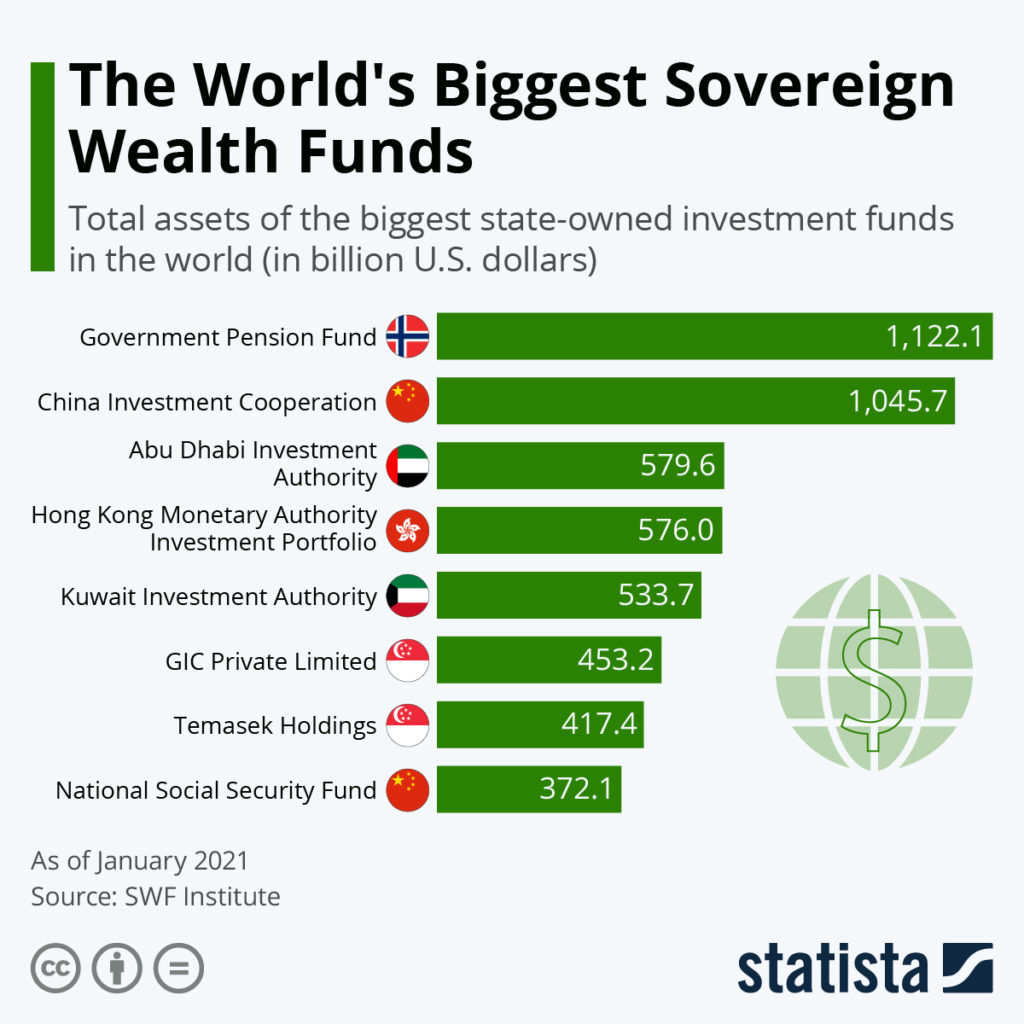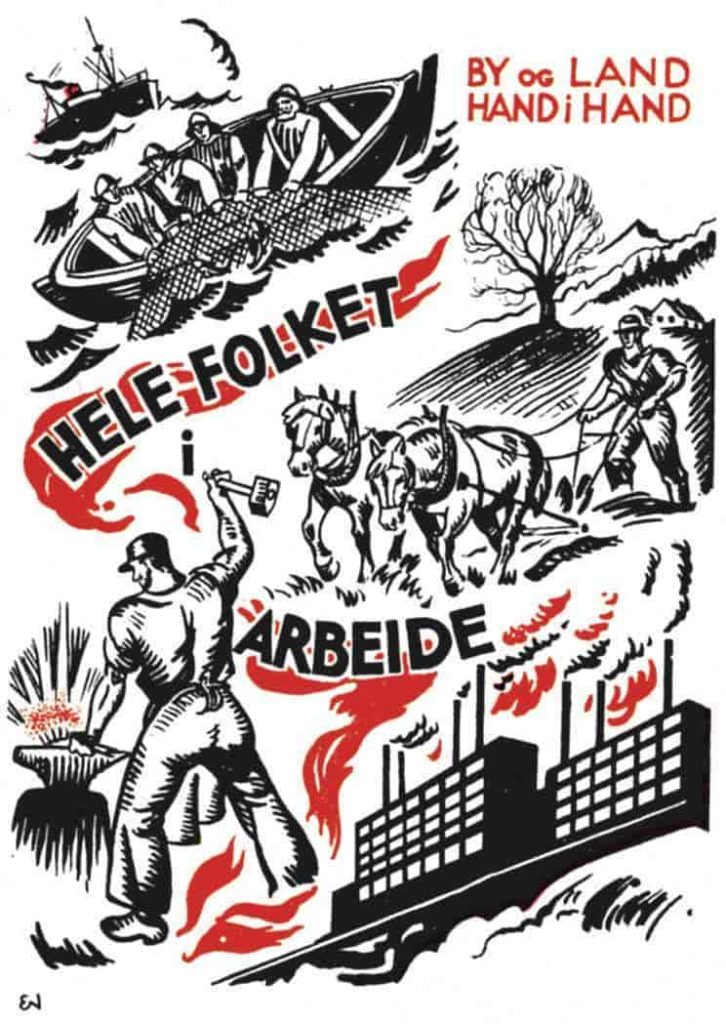Norway is considered a social-democratic state with fewer economic differences among its citizens. With a high Gini coefficient of 27.7, it would seem like this is an applicable model for other countries to replicate.

While the saying “Socialism for the rich and capitalism for the poor” cannot be applied inside Norway, the term describes Norway globally. Norway is a gated community (armed guards at the borders) that outsource labour and most of its production to countries where labour is cheaper and often in slave-like conditions without giving them the benefits of socialism. Isn’t that what all countries in the western world do? Sure, but Norway does that while getting rich on fossil fuels (oil, gas) and destroys the future of the people in the global south.
Nordic nations are wealthy for several reasons; some of the most important are resource extraction, colonialism, neoliberalism, human capital, efficiency, and societal capital (trust). Nordic nations (except norway) are not wealthier than the OECD average. Still, its system of redistribution of wealth (inside their countries) and solid democratic institutions are some of the reasons for the perceived high quality of life.
Jason Hickel, a degrowth advocate, criticised the nordic model environmental cost in 2019 (not much progress has happened since then in Norway):
As for emissions, the Nordic countries perform worse than the rest of Europe, and only marginally better than the world’s most egregious offenders – the US, Australia, Canada, Saudi Arabia. Yes, they generate more renewable energy than most countries, but these gains are wiped out by carbon-intensive imports.
This is why the Nordic countries fall toward the very bottom of the Sustainable Development Index. We think of these nations as progressive, but in fact, their performance has worsened over time. Sweden, for example, has gone from 0.755 on the index in the 1990s down to 0.328 today, plunging from the top seven to number 143.
and
“The first step is to abandon GDP as a measure of progress – as New Zealand Prime Minister Jacinda Ardern recently pledged to do – and focus instead on human well-being and ecology. There is a strong scientific consensus forming around this approach. A new paper signed by more than 11,000 scientists argues that high-income nations must shift to post-growth economic models if we are going to have any chance of preventing climate breakdown. “
While Hickel argues for a Nordic model based on Degrowth, it’s not proven that it will work. Degrowth and decoupling from GDP might severely affect perceived life quality, military defence and technological progress, etc. These issues are tied together with economic growth in an intricate death drive.
From Is Green Growth Possible? by Jason Hickel & Giorgos Kallis:
“Of course, we need all of the technological innovations we can get, and we need to gear government policy toward driving these innovations, but this will not be enough in and of itself. The evidence presented above indicates that in order for efficiency gains to be effective, we will need to scale down aggregate economic activity too. It is more plausible that we will be able to achieve the necessary reductions in resource use and emissions without growth than with growth. Indeed, there are no scientific grounds upon which we should not question growth, if our goal is to avoid dangerous climate change and ecological breakdown. Staying within planetary boundaries may require a degrowth of production and consumption in high-consuming nations (Victor 2008, Alier 2009, Jackson 2009, Kallis 2011, Kallis et al. 2012), and a shift away from the narrow growth focused development agenda in the global South. As Gough (2017) notes, combatting climate change might require not only new clean and efficient energy technologies, but also a reduction and re-composition of consumption, with a shift from carbon-intensive to low or zero carbon sectors.”
Hickel fails to mention how you will solve technological progress without consumption and what happens when you do not have economic growth coupled with technological progress. His report does not answer these and many other questions; however, his conclusion is partly correct. It will be challenging to meet the Paris agreement without drastically changing our path.
Are Norwegians addicted to consumption?
Norway is still one of the world’s top countries of consumption per citizen. When it comes to electronic waste, Norway is number one.
In a recent report from UNICEF called places and spaces, UNICEF outlines how Norway’s overconsumption destroys the living conditions of people in developing countries. Illegal export of waste, inadequate recycling infrastructure, low wages, poor labour conditions, air pollution, environmental toxins, etc., lower people’s living quality and life expectancy in developing nations.
Overconsumption is a systemic issue tightly connected to the economy through economic growth, a system Norwegians maintain daily and do not seem to question. If Norwegians do not consume, the GDP will collapse, and we will enter a recession (much like the recession we are about to enter).
Overconsumption is also connected to habits, perceived life quality, societal pressures, rentier capitalists and material happiness. Another reason little is being done to solve overconsumption in Norway is that hardly any politician wants to argue for a more just and equitable world because politics is a popularity game. Consumers do not want higher costs and limited purchasing power. With the recent rate hikes, Norwegians have already started complaining about too high food and energy prices.
For Norway to reach its climate goals and the Paris agreement, it has to cut 50-55 % of its climate emissions by 2030. If we continue to be tied to an economic growth model, it will be almost impossible to cut the amounts needed.
The socialist food model

Regarding food self-sufficiency, Norway has 40% food security when you remove the imported feed (in 2020). Because of Norway’s location, some types of food are impossible to produce. In contrast, other types of food get more expensive when made in Norway. Still, they have higher quality (lower antibiotics use than most of Europe, higher labour costs, low pesticide use etc.). While food produced in Norway is partly based on cheaply imported resources (soy and other grains for cattle and salmon), reaching 100% self-sufficiency will be difficult. It would require a new type of diet, a higher percentage of the monthly salary spent on food, new farming techniques and more organic plant-based farming.
David Zilber outlines the entropy of a carrot in his recent article:
Paul Ehrlich once said: “If communism failed because of its inability to accurately represent true market value, then it could be said that capitalism will fail for its inability to accurately represent true ecological value.”
and
In a 2015 study of this very topic, Finnish researcher K.C. Raghu conducted and compared LCA’s of imported conventional grown carrots against both domestically produced conventionally grown, and organically grown carrots. The study is thorough, and clearly states its delimitations and its faults where research cannot see beyond the thick brush of a globally structured forest of trade. It admits as much: “Ideally, an LCA should start as the natural system ends and technological system begins. However, in agriculture, integration of a biological system as a part of the phase of production makes it complicated to isolate the technological sphere.” But still he yields insightful results: the domestic, organically grown carrots, on a per kilo basis, produced 97% less greenhouse gas emissions than local conventionally farmed carrots, and 99% less emissions than imported ones. Likewise, the energy demand for all three farming methods were 1.3, 1.9 and 3.7 megajoules per kilo of carrots respectively. We should never presume to know the results before the empirical evidence rolls in, but here, we see science bolstered by folk wisdom yet again. It’s best to eat organic food; or as your grandparents called it, food.
According to Finnish researcher K.C. Ragh study, which David Zilber refers to above, local organic food would benefit the environment, but Norwegians only consume 1,8% organic food. There are many reasons this number is meagre (overall food has low amount of pesticides, Norwegian grocery monopoly, low % of salary goes to food etc.). While 25% of the Norwegian population are climate change sceptics, it’s still an open question how 75% of the Norwegian population chooses to do so little about the current situation.
Norwegians benefit from a capitalist neoliberal system that does not account for most of their consumption’s environmental and human costs. If one applies a global socialist approach to consumption, one will end up with a price hike that would look very different from the current price hikes people are experiencing. It might give rise to a populist right-wing movement because of the extreme change it would cause.
The Fairphone case study

The Fairphone case study hints at the price hikes we would have to endure for a global socialist society to exist. In the report “Barriers and triggers in the process of purchasing a Fairphone”, Johan van Den Heuvel researched what stops people from buying a Fairphone. While the Fairphone is considered “fair”, it does not meet many socialist criteria. Fairphone pays a living wage in production countries (far from the Norwegian living wage) and uses machines where rare minerals, other materials, environmental impact and labour conditions are not included. If all of these factors had been accounted for, the price of a Fairphone would be much higher.
Even with the benefits of the Fairphone (it’s fairer in general), the main reason people do not purchase the phone is the price, appearance and technical specifications versus other phones on the market). Fairphone has sold around 443,667 devices compared to the 15 Billion phones in the world. While this study was conducted in the Netherlands, it can also apply to Norway. Norwegian consumers are responsible for their overconsumption in the form of their choices.
One typical “green growth” argument is that we need more automation and decoupling (with machines where human labour conditions and environmental degradation is not accounted for) to solve this equation. The argument benefits from the capitalist idea that growth without human suffering can continue as long as you automate the supply chain. Automation is often applied in Norway to counter expensive human labour. Since the actual costs of the automation are not accounted for, it works. You effectively replace expensive human labour with exploiting resources and humans in the global south.
Norway also has one of the lowest circularity rates at 2,4% and is below the global average (8.6%). Norway consumes 235 million tonnes of materials, metals, fossil fuels, biomass and minerals to fuel its societal needs each year. 97.6% of these materials are never cycled back into the economy.
A fossil fuel future

Norway has become one of the wealthiest countries in the world because of oil and gas. In war times, the prices of oil and gas increase and it can be considered war profiteering. There’s no question that we still need fossil fuels to some degree but the government in Norway has also decided on expanding its fossil fuel production at a time when it should limit its emissions. The wisting field that is planned in the north of Norway will equal 200 million tons of CO2, which equals four times Norway’s current emissions or 50 coal-fired power plants. According to IEA, to reach the Paris agreement of 1.5 celsius no new oil fields should be built.
Weapon exports
Norway is the 22nd biggest weapon exporter in the world. While a socialist state would actively limit weapon exports, Norway exports weapons to dictatorships such as Qatar. In 2021 Norway increased their weapon export to Qatar and exported weapons for around 63 million dollars.
Exploiting socialism

Could social democracy exist in a contemporary global world with the benefits that come with it (universal public healthcare, gender equality, high levels of democracy etc.) without the current exploitation of the environment and humans? It is still up to debate and taps into the military-industrial complex, life expectancy, living standard, and economic growth vs Degrowth.
How come we refer to Norway as a socialist country when it’s dependent on cheap labour and environmental destruction (oil, overconsumption, farming, fish farming, gas etc.)? Since we cannot account for how everything in this world is connected, the capitalist approach will always be based on exploitation. The tendency is to separate Norway from the rest of the world and hold it up as an example of a prosperous socialist state instead of comparing it to Dubai or other states that are known for severe human rights violations and environmental degradation. In some way, this examination can be applied to most western countries, but Norway is a peculiar example.

While this might be a dystopic read, it means we need to get active, change our habits, get rid of society’s material focus and actively participate in politics to achieve a more just and equitable world.
One way of changing that is what some Norwegians are doing by suing the Norwegian state and taking it to the European court to increase the pressure on the state to follow through on its climate change goals.
Leave a Reply to Why nothing is being done – The Future MethodCancel reply